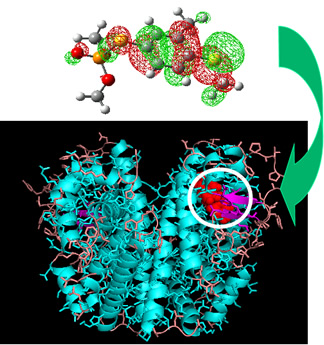Physical Chemistry

- account_circleMasakazu MakinoPhD, Prof.
- account_circleMasahiro TokumuraPhD, Research Asst. Prof.
- Website:https://u-shizuoka-bussei.jp/
- Mail:makinom@u-shizuoka-ken.ac.jp
- Phone:+81-54-264-5785
Highly Precise Evaluation and Prediction of the Negative Impact of Unintentional Products on Our Health through Food Resources and Environment
Discussions on Hitherto Unexplored Areas of Material Science Fields from the Viewpoint of Chemistry
- 1. Study on determination, synthesis, toxicity, and removal technology of novel organic micropollutants in the environment.
Organic micropollutants such as those in pharmaceuticals and personal care products (PPCPs) have, for several decades, been a critical issue with regard to their effect on the aquatic environment. We have investigated the chemical and toxicological properties of novel PPCPs using instrumental analysis (GC-MS, LC-MS, NMR, etc.), standard synthesis, bioassays, and removal technology. Our recent studies have indicated occurrences of parabens (preservatives) and aromatic sensitizers (printing-related materials) in river water, soil, and aquatic biota. We have also evaluated the potential impact on aquatic ecosystems by PPCPs including their transformation products by photo-oxidation, chlorination, metabolism, and other environmental factors.
- 2. High precise evaluation of biological activity caused by UPs transformed from organophosphorus compounds
Organophosphorus compounds, which are widely used as agrochemicals such as insecticides, help us ensure a stable supply of crops. On the other hand, there have been concerns that these compounds and their UPs have a serious negative impact on biological and ecological systems. To clarify this impact, we have carried out evaluations from various angles by using bioassays and/or virtual screenings. In addition, we have also attempted to create new materials by using monothiophosphate groups.
- 3. Elucidation of thermodynamic relationships on the basis of molecular topology
We have attempted to elucidate statistical thermodynamic relationships such as enthalpy and entropy compensation or isokinetic/isoequilibrium effects on the basis of molecular structure and its topological characteristics by using isothermal gas chromatography.
- Figure 1
- Mechanism of degradation of pharmaceutical (CBZ: carbamazepine) by photo-Fenton process (wastewater treatment process to remove PPCPs).

- Figure 2
- Top: The molecular structure of S-aryl fenthion, which is one of the UPs detected by us and transformed from an organophosphorus insecticide.
Bottom: A schematic model of virtual screening for UPs. 
References
- J. Phys. Chem. A., 124(22) pp.4549–4555 (2020)
- Chemosphere, 239, 124704 (2020)
- Chemosphere, 226, 316-320 (2019)
- Ecotoxicol. Environ. Safe., 169, 464-469 (2019)
- Adv. Pow. Tech., 30(4), 795-806 (2019)
- Chemosphere, 226, 316-320 (2019)
- Environ. Sci. Technol. Lett., 57, 448-455 (2018)
- J. Phys. Org. Chem., e3783 (2017)